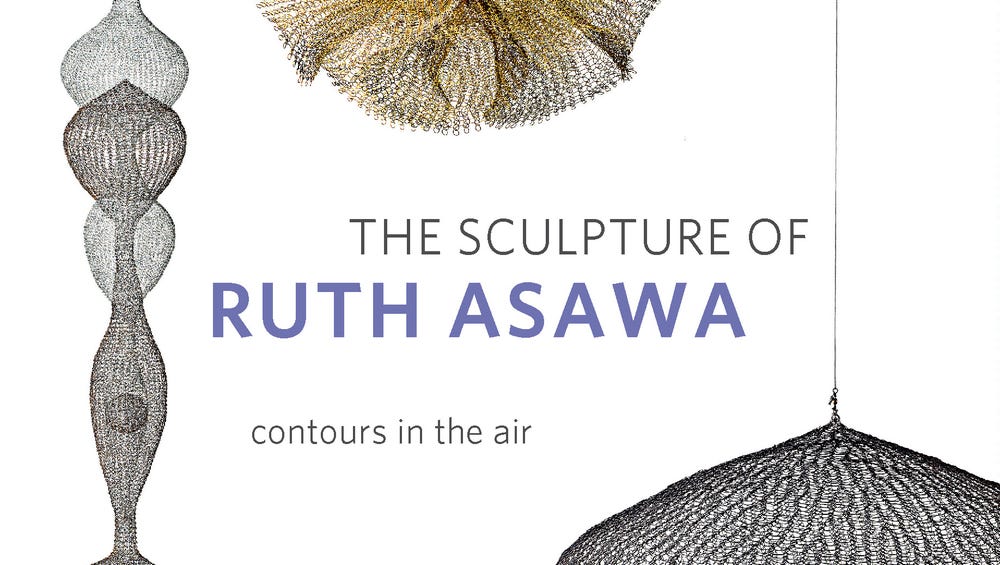de Young Museum Organizes First Major Ruth Asawa Retrospective
Oct 10, 2006
San Francisco, October 10, 2006—Since the de Young Museum’s reopening in October 2005, over 1.6 million visitors have enjoyed the 15 ethereal wire sculptures that grace the concourse level of the Nancy B. and Jake L. Hamon Education Tower. Beginning on November 18, 2006, museum goers will have a chance to see a wider array of these works when the de Young opens The Sculpture of Ruth Asawa: Contours in the Air, the first complete retrospective of Ruth Asawa’s enduring and richly varied career. The exhibition is organized and curated by Dr. Daniell Cornell of Fine Arts Museums San Francisco.
Born in 1929 in Norwalk, California, Asawa is a groundbreaking modernist sculptor of abstract forms. Although widely lauded in the 1950s and 1960s, and today considered a San Francisco treasure, Asawa has been under-represented by most art history surveys of 20th-century sculpture. “Because her work uses nontraditional materials and a manual method that appears related to knitting, weaving and craft, it is often overlooked in discussions of modernist sculpture,” says Dr. Cornell, Director of Contemporary Art Projects and Curator of American Art. “Furthermore, her decision to create works that hang, often meant to be seen from below, challenges the standard conventions of sculpture.”
The exhibition traces Asawa’s trajectory from her student drawings and paintings created while at Black Mountain College to her career as a pioneering modernist artist recognized nationally for her wire sculpture, public commissions, and activism in education and the arts. Contours in the Air establishes the importance of Asawa’s work within the larger national context of artists who redefined art as a way of thinking and acting in the world rather than as a mere stylistic practice. The full scope and stature of Ruth Asawa’s work is brought into brilliant focus in this exhibition of 52 sculptures and 44 works on paper, with additional documentary source materials including notebooks and vintage photographs by Imogen Cunningham.
In her lifelong experimentations with wire, especially its capacity to balance open and closed forms, Asawa invented a powerful new vocabulary. Committed to enhancing the quality of daily life through art produced within the home, she contributed a unique perspective to the formal explorations of 20th century abstract sculpture.
Working in a variety of non-traditional media, Asawa performed a series of uncanny metamorphoses, leading viewers into a deeper awareness of natural forms by revealing their structural properties. Through her artistic practice, Asawa has reconnected with the Buddhist ethos of her parents, transforming the commonplace into metaphors for life processes themselves.
“The Fine Arts Museums are exceptionally proud to organize the first major retrospective of Ruth Asawa’s art,” says John E. Buchanan, Jr., Director of the Fine Arts Museums of San Francisco. “She has always loved and supported the de Young and wanted to have her artistic legacy centered here. In addition, her name has long been familiar to area residents because of her tireless advocacy for community art projects and art education in the public schools. We are deeply pleased to be the repository of her legacy, represented by the generous gift of 15 wire sculptures installed in the lobby of the Nancy B. and Jake L. Hamon Tower.”
On the occasion of the exhibition, a fully illustrated catalogue has been published by the University of California Press, with essays by Daniell Cornell, Emily K. Doman Jennings, Mary Emma Harris, Karin Higa, Jacqueline Hoefer, Paul J. Karlstrom, John Kreidler, Susan Stauter, and Sally B. Woodbridge. Organized into three sections of essays, The Sculpture of Ruth Asawa is punctuated by two sections of color plates illustrating the works in the exhibition; the first plate section features her drawings, paintings, and prints and the second her sculptures. The catalogue’s essays include Hoefer’s studiously researched biographical portrait, Higa’s examination of early influences, Harris’s discussion of the pedagogical program Asawa undertook at Black Mountain College, and Asawa’s own voice, from an interview conducted by American art historian Paul J. Karlstrom in 2002 for the Archives of American Art, Smithsonian Institution. Together this publication and the exhibition serve to reinforce this important artist’s work in the history of American modernism.
